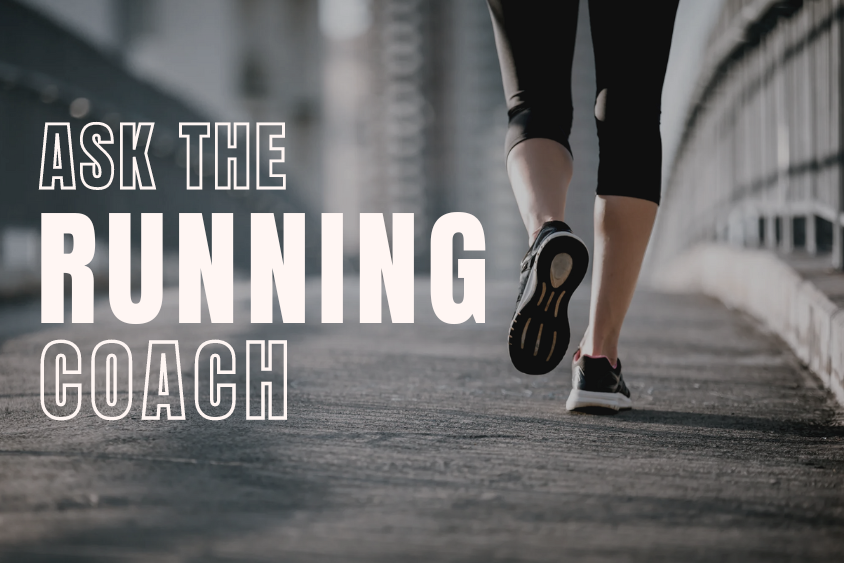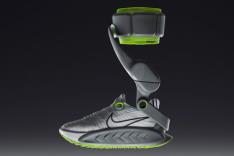
Our Certified Run Coach, Josh Janicek, addresses your burning questions! If you've ever had a question you've been dying to ask, now's your chance. Submit your queries through our Google form [here] for consideration. While we aim to make this series fun, we aim to provide valuable insights. Please note that not all questions may be answered, and for medical advice, consult your healthcare professional, not ACTIVE or Josh.
About Our Running Coach: Josh Janicek is a Road Runners Club of America Certified Run Coach based out of Austin, TX. He is a 7-time Boston Marathon qualifier, founder of an Austin-based run club and training group, and actively coaches athletes ranging from those who are new to running to competitive marathoners.
Why Trust Us?
ACTIVE.com's editorial team relies on the knowledge and experience of fitness and wellness experts including competitive athletes, coaches, physical therapists, nutritionists, and certified trainers. This helps us ensure the products we feature are of the highest standard. Collectively, the team has spent countless hours researching equipment, gear, and recovery tools in order to create the most accurate, authentic content for our readers. Customer satisfaction is also a key part of our review process, which is why we only feature products that are highly rated.
Let's dive in and get those questions answered!
Question #1: Just coming off a 6 month break due to injury. I am 62 y/o. How can I get back on track for a 5K?
Coach Josh: Keep it simple, ease into it, and don’t fixate on a goal to be the previous version of yourself. Six months ago can feel like a lifetime while it can also feel like just yesterday. You feel like haven’t run a step your whole life, but you also feel like you should have the cardiovascular fitness and muscle strength that you had pre-surgery (or injury, or life stuff). Sadly, those fitness and strength resources get quickly reallocated by the body to other much-needed and important jobs. Like carefully insulating all of the Peanut M&M’s I’ve been consuming. You know, to keep my glycogen strategically topped off for my grand return to running. That might just be me.
Revel in starting the journey again. Make it new. Take new routes. Run earlier, or later. Take the dog. Or the cat. I guess. I don’t know about that one. You do it, and get back to us on how it went. Like they always say: “you gotta crawl before you can walk.” I’m assuming we’re already past the crawling part, so start by walking if that’s where you’re at right now. And always been fine with where you are right now. That “right now” won’t be right now for much longer. You still have muscle memory. It’ll never come back as quickly as you want it, but it will come back much quicker than if you had been sedentary or inactive for years. Gradually fold in some run/walk intervals. A good base is a 60-second run followed by a 30-second walk interval, and repeat that for X minutes or Y miles. And this is a good place for the sage reminder to check in honestly with yourself and run how you feel. If a 60/30 run/walk ratio doesn’t work for you right now, change it. Make it 30/30 or 30/60 run/walk. Whatever will work for you to get you to that X minutes or Y miles. Give yourself a small and achievable goal each week. A good rule of thumb is to increase mileage and/or intensity by no more than 10% each week.
And since you mentioned the 5k specifically, Active.com has the official Couch to 5K run training app and plan to get you into 5k shape with 30 minutes, three times a week, for nine weeks..
Question #2: I'm 66 years old and run 5k races; what is the best meal to eat the night before a training run or the race. Typically I eat whole wheat pasta, some bread and fruits. I try to run every other day, two 5k and one 4 mile distances. Thanks.
Coach Josh: Whole wheat pasta, bread, and fruits are great sources of carbohydrates leading up to a big training run or race. Many fruits are very high in fiber, so check the nutritional information of your fruits before you go full rabid on that family-pack mixed fruit bowl.
Maintain a healthy and balanced diet, and always make sure to consult with a licensed medical professional with any specific questions or concerns regarding your nutrition.
Question #3: What are the best strategies for increasing Vo2Max for runners over 75 years old? At this age, I am only able to run 2-3 days per week plus 2 strength days per week.
Coach Josh: VO2 max is the maximum amount of oxygen that your body can consume during exercise. You can incorporate other cardiovascular exercises, such as swimming and cycling, to increase your VO2 max. You could also assign one of your run days as an interval workout day where you would alternate bouts of high intensity/speed/heart rate with rest for a given number of sets.
I would also recommend not fixating on an arbitrary number that most GPS watches can show you nowadays. Put in the work and miles for the goals that you want to achieve. All of the physiological stuff will sort itself out. For example, if your goal is to run a 10k in less than an hour, work on your endurance and speed slowly over time to get you to that goal. Your VO2 max, heart rate, lactate threshold, running economy, and a slew of other things will also increase and/or improve accordingly over time.
Question #4: Whenever I start incorporating speed work into my training, I always end up injured (hip, ankles, knees and/or tibias)... what advice do you have for easing into speed work and making it a regular workout (1x per week or 1x every 2 weeks) without experiencing setbacks?
Coach Josh: It sounds like your incorporating a bit of too much too soon. A good number to commit to the memory is 10%. Don’t increase the volume or intensity of your runs by more than 10% per week. When you’re starting to incorporate speed work, start slow and easy. Consider starting with no more than one mile of total distance for the hard effort repetitions. For example, you could run 4 x 400m with y rest between repetitions. If you come away from that workout uninjured, repeat the workout the following week, and incorporate an additional repetition to make it a 5 x 400 workout.
I would start out with no more than one (1) speed workout per week. Assuming you remain uninjured and as you progress, you could introduce another form of running speedwork, such as hills, tempo runs, and fartleks, on another day of the same week, making sure to put substantive rest and recovery between those days.
How you recover during your intervals can also be very important. Look back on those times when you ended up injured when incorporating speed. Active recovery (jogging or walking) can promote blood flow and keep muscles loose. Standing recovery can promote the body’s repair process. Experiment with how you recover between bouts of effort. How you recover between efforts is just as important as how you execute your run repetitions.
Also, seek a coach for in-person guidance and recommendations for incorporating speed and strength work. If the injuries persist, seek the help of a trained medical professional. And think about people like physical therapists, doctors, and coaches as part of your team. They’re there to help assess and treat symptoms and causes, but they’re also there to help you achieve your specific goals in running.
Submit your queries through our Google form [here] for consideration.
Check Out The Latest Running Socks Deals on Amazon
By clicking on the product links in this article, we may receive a commission fee at no cost to you, the reader. Sponsorships and affiliate commissions help support our research so we can help you find the best products. Read full affiliate disclosure here.
About the Author

Josh is the Staff writer for ACTIVE.com. He is a 7-time Boston Marathon qualifier, ran the Grand Canyon rim-to-rim, and have even run a couple of ultra-marathons. He is also cofounder of one of the largest running clubs in the Austin area.
Get ACTIVE on the Go


Couch to 5K®
The best way to get new runners off the couch and across the finish line of their first 5K.
Available for iOS | Android







Discuss This Article